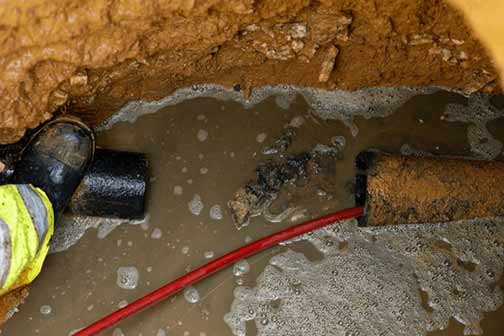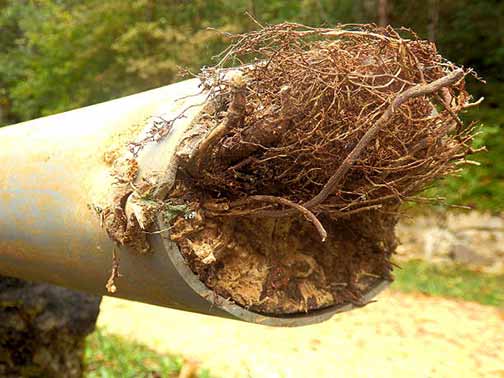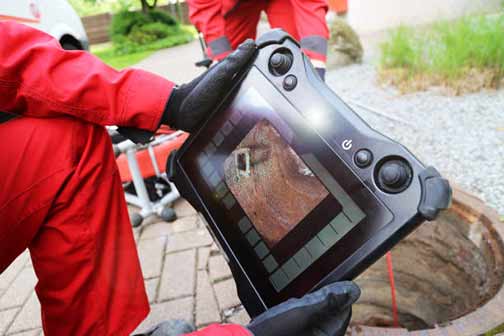
Maintaining a functional plumbing system is essential for any household or commercial property. Sewer line problems can lead to significant inconveniences and costly repairs if not addressed promptly. Below we will explore some of the most common sewer line issues that property owners may encounter and provide an overview of their potential impacts on the plumbing system.
Clogged Sewer Lines: Causes, Prevention, and Effective Solutions
Clogged sewer lines are one of the most frequent problems that homeowners face. These blockages can result from a variety of factors, including the accumulation of debris, grease buildup, and the intrusion of foreign objects. To prevent clogs, it is crucial to avoid flushing non-biodegradable items such as wipes, sanitary products, and paper towels down the toilet.
When dealing with a clogged sewer line, several solutions can be employed. Using a plunger or a drain snake can help dislodge minor blockages. For more stubborn clogs, a professional plumber may use hydro jetting, which involves high-pressure water to clear the obstruction. Regular maintenance, such as periodic drain cleaning, can also help prevent future clogs.
Preventative measures are key to maintaining clear sewer lines. Homeowners should be mindful of what they flush and dispose of grease and food waste properly. Installing drain screens can also help catch debris before it enters the sewer line. By taking these steps, the risk of clogs can be significantly reduced.
Tree Root Intrusion: Identifying, Addressing, and Preventing the Issue
Tree roots can infiltrate sewer lines through small cracks or joints, causing blockages and damage to the pipes. This problem is more common in older properties with aging sewer systems. Signs of tree root intrusion include slow drains, gurgling noises, and sewage backups.
To address tree root intrusion, a plumber may use a rooter machine to cut through the roots and clear the pipe. In severe cases, pipe relining or replacement may be necessary. Preventative measures, such as planting trees away from sewer lines and using root barriers, can help minimize the risk of future intrusions.
Regular sewer camera inspections can help detect early signs of root intrusion before they cause significant damage. Homeowners should also be aware of the types of trees they plant near sewer lines, opting for species with less aggressive root systems. By taking these precautions, the likelihood of tree root intrusion can be reduced.

Broken or Collapsed Sewer Pipes: Detection, Repair, and Prevention
Broken or collapsed sewer pipes can result from various factors, including ground movement, heavy traffic, and aging infrastructure. These issues can lead to sewage leaks, foul odors, and sinkholes. Detecting a broken or collapsed pipe often requires a professional inspection using a sewer camera.
Repairing broken or collapsed sewer pipes may involve traditional excavation methods or trenchless technologies. Trenchless methods, such as pipe bursting and pipe relining, are less invasive and can be more cost-effective. It is essential to address these issues promptly to prevent further damage and costly repairs.
Preventative measures include regular sewer camera inspections and monitoring for signs of pipe damage, such as unexplained wet spots in the yard or persistent foul odors. By addressing minor issues early, homeowners can avoid more extensive and costly repairs in the future.
Corroded Pipes: Understanding the Risks, Solutions, and Preventative Measures
Corrosion is a common issue in older metal sewer pipes, such as cast iron or galvanized steel. Corroded pipes can lead to leaks, reduced water flow, and structural damage. Signs of corrosion include discolored water, low water pressure, and frequent clogs.
Replacing corroded pipes with modern materials such as PVC or HDPE can help prevent future problems. In some cases, pipe relining may be a viable option to reinforce the existing pipes and extend their lifespan. Regular inspections and maintenance can help identify and address corrosion issues before they become severe.
Preventative measures include using corrosion-resistant materials for new installations and monitoring the quality of water to detect early signs of corrosion. Regular maintenance and inspections can help ensure that any corrosion issues are addressed promptly, preventing more severe damage.
Sewer Line Bellies: Causes, Detection, and Effective Solutions
A sewer line belly, also known as a sag or dip, occurs when a section of the pipe sinks due to soil erosion or improper installation. This creates a low point in the sewer line where debris and wastewater can accumulate, leading to blockages and backups.
To fix a sewer line belly, a plumber may need to excavate the affected area and reposition the pipe to ensure proper drainage. In some cases, trenchless methods such as pipe bursting or pipe relining may be used to address the issue. Preventative measures, such as proper installation and soil stabilization, can help reduce the risk of sewer line bellies.
Regular sewer camera inspections can help detect sewer line bellies early, allowing for timely intervention. Homeowners should ensure that any new sewer line installations are done correctly and that the surrounding soil is stable to prevent future issues.

Sewer Line Leaks: Detection, Repair, and Preventative Strategies
Sewer line leaks can occur due to various factors, including cracks, corrosion, and joint failures. These leaks can lead to water damage, mold growth, and foul odors. Detecting a sewer line leak often requires a professional inspection using specialized equipment such as sewer cameras and leak detection devices.
Repairing a sewer line leak may involve traditional excavation methods or trenchless technologies. Trenchless methods, such as pipe relining and pipe bursting, can be less invasive and more cost-effective. Regular inspections and maintenance can help identify and address leaks before they cause significant damage.
Preventative measures include regular inspections and monitoring for signs of leaks, such as unexplained increases in water bills or damp spots in the yard. By addressing leaks early, homeowners can prevent more extensive damage and costly repairs.
Sewer Line Backups: Prevention, Detection, and Effective Solutions
Sewer line backups can result from various factors, including clogs, tree root intrusion, and damaged pipes. These backups can cause sewage to overflow into the property, leading to water damage and health hazards. Preventing sewer line backups involves regular maintenance, proper disposal of waste, and addressing any underlying issues promptly.
To fix a sewer line backup, a plumber may use methods such as drain cleaning, hydro jetting, and pipe repair or replacement. Installing backflow prevention devices can also help protect the property from future backups. Regular inspections and maintenance can help identify and address potential issues before they lead to backups.
Preventative measures include proper waste disposal, regular drain cleaning, and installing backflow prevention devices. By taking these steps, homeowners can reduce the risk of sewer line backups and maintain a healthy plumbing system.
Preventative Measures for Maintaining a Healthy Sewer System
Maintaining a healthy sewer system involves taking proactive steps to prevent common problems. Some preventative measures include:
- Regular inspections and maintenance by a professional plumber
- Avoiding flushing non-biodegradable items down the toilet
- Proper disposal of grease and food waste
- Planting trees away from sewer lines and using root barriers
- Addressing any signs of sewer line issues promptly
By following these preventative measures, property owners can reduce the risk of sewer line problems and ensure the longevity of their plumbing systems.
Conclusion: The Importance of Timely Sewer Line Maintenance and Repair
In conclusion, understanding common sewer line problems and their solutions is essential for maintaining a functional plumbing system. Promptly addressing issues such as clogs, tree root intrusion, broken or collapsed pipes, corrosion, sewer line bellies, leaks, and backups can prevent costly repairs and ensure the smooth operation of the sewer system.
Regular inspections and maintenance by a professional plumber, along with proactive preventative measures, can help property owners avoid common sewer line problems and extend the lifespan of their plumbing systems. By staying vigilant and addressing any signs of issues promptly, property owners can maintain a healthy and efficient sewer system.

